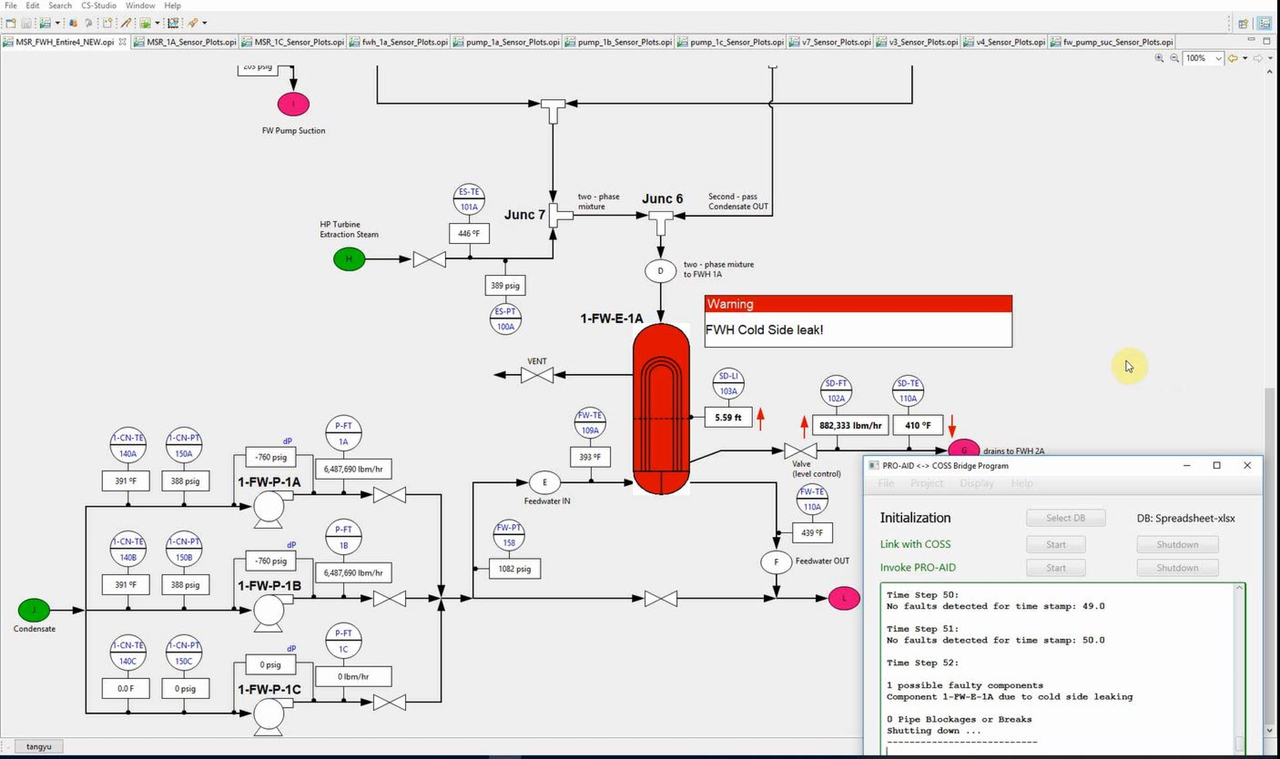The software package Parameter-Free Reasoning Operator for Automated Identification and Diagnosis (PRO-AID) performs real-time monitoring and diagnostics for an engineering system using a form of automated reasoning.
Benefits and Advantages
The code automatically constructs a digital twin from the fluid system Piping and Instrumentation Diagram (P&ID) and electrical One-Line Drawing as provided by the user. The PRO-AID solution to the monitoring and diagnosis problem is unique while its capabilities and ease of use make for an attractive business case.
- Plant-specific input is limited to the piping and instrumentation diagram (P&ID). This avoids the need for a subject-matter expert to construct a detailed model of the engineered system.
- False alarm diagnoses are minimized by requiring that the internal representation of the underlying physics in the algorithm be consistent with the observed sensor readings.
- The fault diagnosis is immune to fault-induced process perturbations that can propagate through a system of components. This is achieved by treating the engineered system in its entirety rather than as a collection of standalone components taken in isolation of each other.
- The fault diagnosis is “explainable” and understandable by the System Engineer. The inclusion of process physics in the underlying method provides for this.
- A list of candidate faults is not required to be provided.

Technical Concepts
PRO-AID consists of the following major components:
- System model, taking input from the user supplied Piping and Instrument Diagram (P&ID) for the engineering system of interest, automatically assembles a physics-based model from a library of plant components that include flow branch and junction, valve, single-phase heat exchanger, condensing heat exchanger, centrifugal pump, induction motor and other components.
- Virtual sensor model, taking input from the system model and measurements, derives the values of unmeasured process variables to yield an augmented sensor set that provides more detailed knowledge of the current state of the physical system.
- Automated reasoning module, taking input from the system model and the augmented sensor set, uses a forward chaining procedure to diagnose component faults and sensors that are out of calibration or failed. If a sensor is determined to be failed, it is automatically removed from the list of physical sensors followed by a reinitialization of the list of virtual sensors. The reasoning process incorporate a generalized likelihood ratio test to include the effects of system model uncertainty and measurement uncertainty on the diagnosis.
- Rank-ordered fault probability module, taking output from the automated reasoning module, determines when anomaly thresholds are exceeded and generates a list of candidate faults rank ordered from greatest to least probable.
Applications
PRO-AID has been used to perform anomaly diagnosis in nuclear plant applications that include operator human factors studies conducted with nuclear plant operators using a full scope plant simulator and equipment performance monitoring using plant data sets from two U.S. nuclear utilities.